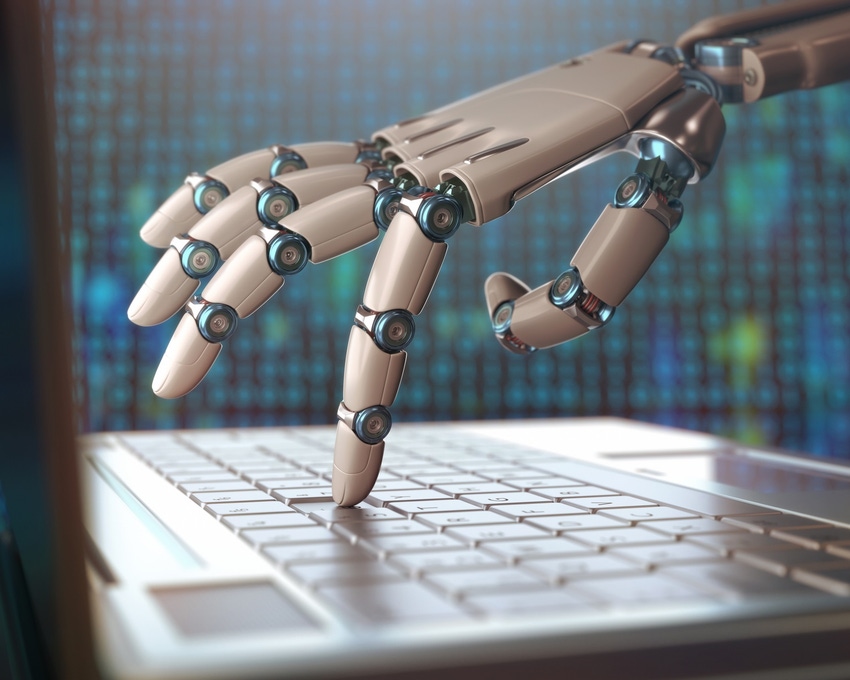We’ve seen a couple of AI shout-outs this week with Microsoft targeting telcos' worryingly poor customer service record and European scientists potentially creating the building blocks for Skynet.
September 13, 2017

We’ve seen a couple of AI shout-outs this week with Microsoft targeting telcos’ worryingly poor customer service record and European scientists potentially creating the building blocks for Skynet.
Starting in the Microsoft offices, the team has paired up with Amdocs to provide an intelligent solution to one of the biggest questions which has faced the telco space in years; why are we so poor at customer services?
In the Net Promoter annual report, the team put together a ranking of all the verticals in the US. At the top of the list were physical retail stores, and at the bottom of the list were internet service providers. Cable/Satellite providers were second to last, and cellular providers were 17 out of 23.
Clearly there is something going wrong, and the crack team of Microsoft and Amdocs aim to fix it. How you ask; by introducing chatbots for the telcos, as clearly humans can’t be allowed to have any interaction with their customers.
The SmartBot technology actually comes from Amdocs, but the intelligence is going to be from Microsoft’s artificial intelligence solution, Cortana. This is where the success of the idea will come from. The basic (and advanced) understanding of sentiment, intent, natural language and emotion which we as humans (well most of us anyway) do so easily will need to be replicated in an AI solution for this to be anywhere near a success. This is all Microsoft.
However, Amdocs has contributed something, the machine learning components of the bot. Amdocs claim, although most other AI companies also claim this, it’s intelligence platform can be used to build individual personal experiences for each customer.
But why start in the telco customer service arena? Well, the NPS scores are usually so low even if the technology doesn’t work, it’s not going to cause that much collateral damage…
However, despite there being an army of nay-sayers arguing against AI, Amdocs has said we’re getting more accustomed to the idea. Research from the team has shown:
Half of consumers think AI will become crucial to their lives within five years
85% of businesses believe customers services will be performed by bots within five years
37% forget they are conversing with a bot during some of these interactions
While 73% want human like traits in their bot to perhaps confuse the distinction further. Politeness was the most popular trait (64%), though a sense of humour was there for a few as well (29%). And we prefer female bots as well (35% vs. 15%)
“Artificial Intelligence has been domesticated and normalised in the minds of many consumers. Where once ‘AI’ meant robots and sci-fi, now it is has become accessible, is in people’s homes, and is helping them to complete everyday tasks,” said Jonathan Kaftzan, Head of Marketing at Amdocs Digital.
The normalization and acceptance of AI from the general public is of course crucial for any of these big ideas to work, but when should the line be drawn? If acceptance gives permission for scientists to push the boundaries, who is mature enough to say we have gone far enough, or will we find out too late…
Leaving Microsoft and Amdocs behind, a team of European scientist has been trying to figure out how to make robots smarter, more independent and self-healing. Hailing from Lausanne, Lisbon and Brussels, the scientists have written a paper called ‘Mergeable nervous systems for robots’ (you can find the full paper here), which puts out an idea which could be the beginning of the end.
The basic idea is to have a swarm of robots, all of which have their own CPUs, but can merge together to achieve more complex or physically taxing tasks. Once the robots merge, one is designated the ‘brain’ which control the rest. These robots can function on their own, but once merged, the power (both physical and intelligence) is increased through the basic idea of scale.
“Here, we present robots whose bodies and control systems can merge to form entirely new robots that retain full sensorimotor control,” the paper reads.
“Our control paradigm enables robots to exhibit properties that go beyond those of any existing machine or of any biological organism: the robots we present can merge to form larger bodies with a single centralized controller, split into separate bodies with independent controllers, and self-heal by removing or replacing malfunctioning body parts. This work takes us closer to robots that can autonomously change their size, form and function.”
Where this perhaps doesn’t become a good idea is the intelligence aspect. Right now robots are controlled by piece of software in the cloud. If things are going wrong, you break the connection, rendering the robot to a piece of metal. In this example, the scientists are proposing putting the intelligence in the machines, which can be scaled as the machines merge.
But it’s not just the intelligence that scales, it’s also the strength, the range of skills and the adaptability of the robots. Sounds neat right, or have we just started the beginning of the end of humanity.
About the Author(s)
You May Also Like








.png?width=300&auto=webp&quality=80&disable=upscale)


_1.jpg?width=300&auto=webp&quality=80&disable=upscale)


.png?width=800&auto=webp&quality=80&disable=upscale)